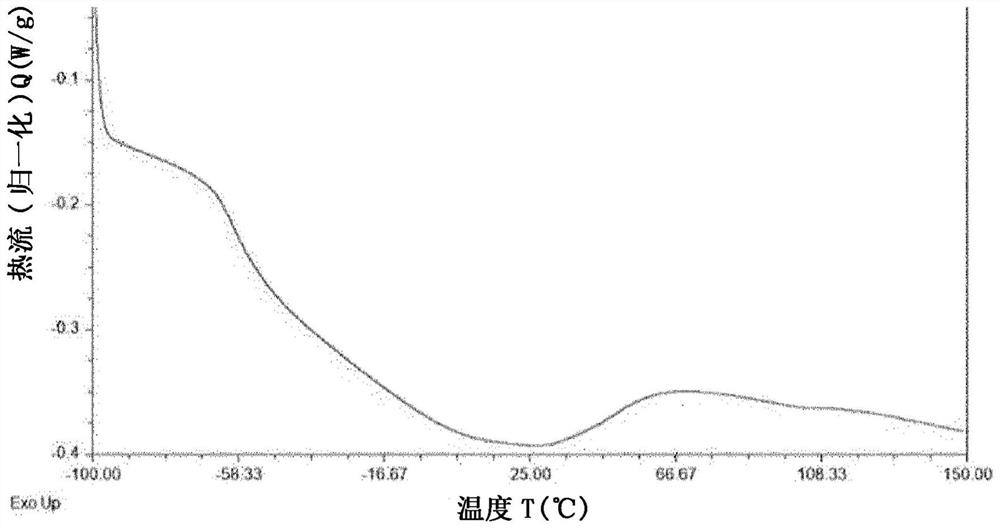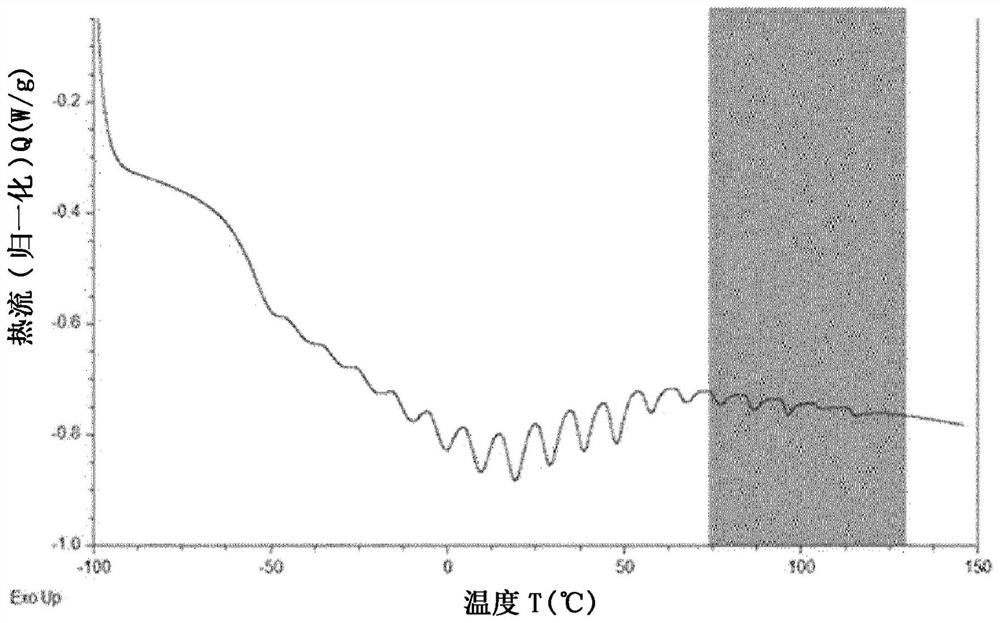Polypropylene-based composite material
A composite material, polypropylene technology, applied in the field of polypropylene composite materials, to achieve the effect of improving impact strength properties, excellent miscibility, and uniform dispersion
- Summary
- Abstract
- Description
- Claims
- Application Information
AI Technical Summary
Problems solved by technology
Method used
Image
Examples
preparation example Construction
[0059] In particular, the olefin-based copolymer of the present invention can be obtained by a production method comprising making the olefin-based monomer aggregation steps.
[0060] However, in the preparation of the olefin-based polymer according to the embodiment of the present invention, it should be understood that the range of the structure of the transition metal compound of formula 1 is not limited to the specifically disclosed type, but includes within the spirit and technical scope of the present invention including All variations, equivalents or substitutions of .
[0061] [Formula 1]
[0062]
[0063] In formula 1,
[0064] R 1 The groups are the same or different and are independently hydrogen, alkyl of 1 to 20 carbon atoms, alkenyl of 2 to 20 carbon atoms, aryl, silyl, alkylaryl, arylalkyl or substituted a metalloid group of a Group 4 metal having a hydrocarbyl group, and two R 1 The groups may be linked to each other via an alkylidene group containing a...
preparation example 1
[0132] Catalyst Preparation Example 1: Preparation of Transition Metal Compound A
[0133]
[0134] (1) Preparation of 8-(2,3,4,5-tetramethyl-1,3-cyclopentadienyl)-1,2,3,4-tetrahydroquinoline
[0135] (i) Preparation of lithium carbamate
[0136] 1,2,3,4-Tetrahydroquinoline (13.08 g, 98.24 mmol) and diethyl ether (150 mL) were placed in a shlenk flask. The shlenk flask was immersed in a -78 °C cryogenic bath obtained from dry ice and acetone and stirred for 30 min. Then, n-BuLi (39.9 mL, 2.5 M, 98.24 mmol) was injected via syringe under nitrogen atmosphere, forming a pale yellow slurry. Then, the flask was stirred for 2 hours, and the temperature of the flask was raised to room temperature while removing generated butane gas. Immerse the flask again in a cryogenic bath at -78 °C to lower the temperature, and inject CO 2 gas. With the injection of carbon dioxide gas, the slurry disappeared into a clear solution. The flask was connected to a bubbler and the temperature ...
preparation example 2
[0152] Catalyst Preparation Example 2: Preparation of Transition Metal Compound B
[0153]
[0154] (1) Preparation of 2-methyl-7-(2,3,4,5-tetramethyl-1,3-cyclopentadienyl)indoline
[0155] 2-Methyl-7-(2,3,4,5-tetramethyl-1,3-cyclopentadienyl)indoline was prepared by the same method as (1) of Preparation Example 1, except The point is that 2-methylindoline is used instead of 1,2,3,4-tetrahydroquinoline in (1) of Preparation Example 1. The yield was 19%.
[0156] 1 H NMR (C 6 D. 6 ): δ6.97(d, J=7.2Hz, 1H, CH), δ6.78(d, J=8Hz, 1H, CH), δ6.67(t, J=7.4Hz, 1H, CH), δ3 .94(m, 1H, quinoline-CH), δ3.51(br s, 1H, NH), δ3.24-3.08(m, 2H, quinoline-CH 2 , Cp-CH), δ2.65 (m, 1H, quinoline-CH 2 ), δ1.89(s,3H,Cp-CH 3 ), δ1.84(s,3H,Cp-CH 3 ), δ1.82(s,3H,Cp-CH 3 ), δ1.13 (d, J=6Hz, 3H, quinoline-CH 3 ), δ0.93 (3H, Cp-CH 3 )ppm.
[0157] (2) [(2-methylindolin-7-yl) tetramethylcyclopentadienyl-η 5 , Preparation of κ-N]Dimethyltitanium
[0158] (i) Obtain the dilithium salt compo...
PUM
| Property | Measurement | Unit |
|---|---|---|
| melt flow index | aaaaa | aaaaa |
| melting point | aaaaa | aaaaa |
| particle size | aaaaa | aaaaa |
Abstract
Description
Claims
Application Information
 Login to View More
Login to View More - R&D
- Intellectual Property
- Life Sciences
- Materials
- Tech Scout
- Unparalleled Data Quality
- Higher Quality Content
- 60% Fewer Hallucinations
Browse by: Latest US Patents, China's latest patents, Technical Efficacy Thesaurus, Application Domain, Technology Topic, Popular Technical Reports.
© 2025 PatSnap. All rights reserved.Legal|Privacy policy|Modern Slavery Act Transparency Statement|Sitemap|About US| Contact US: help@patsnap.com



